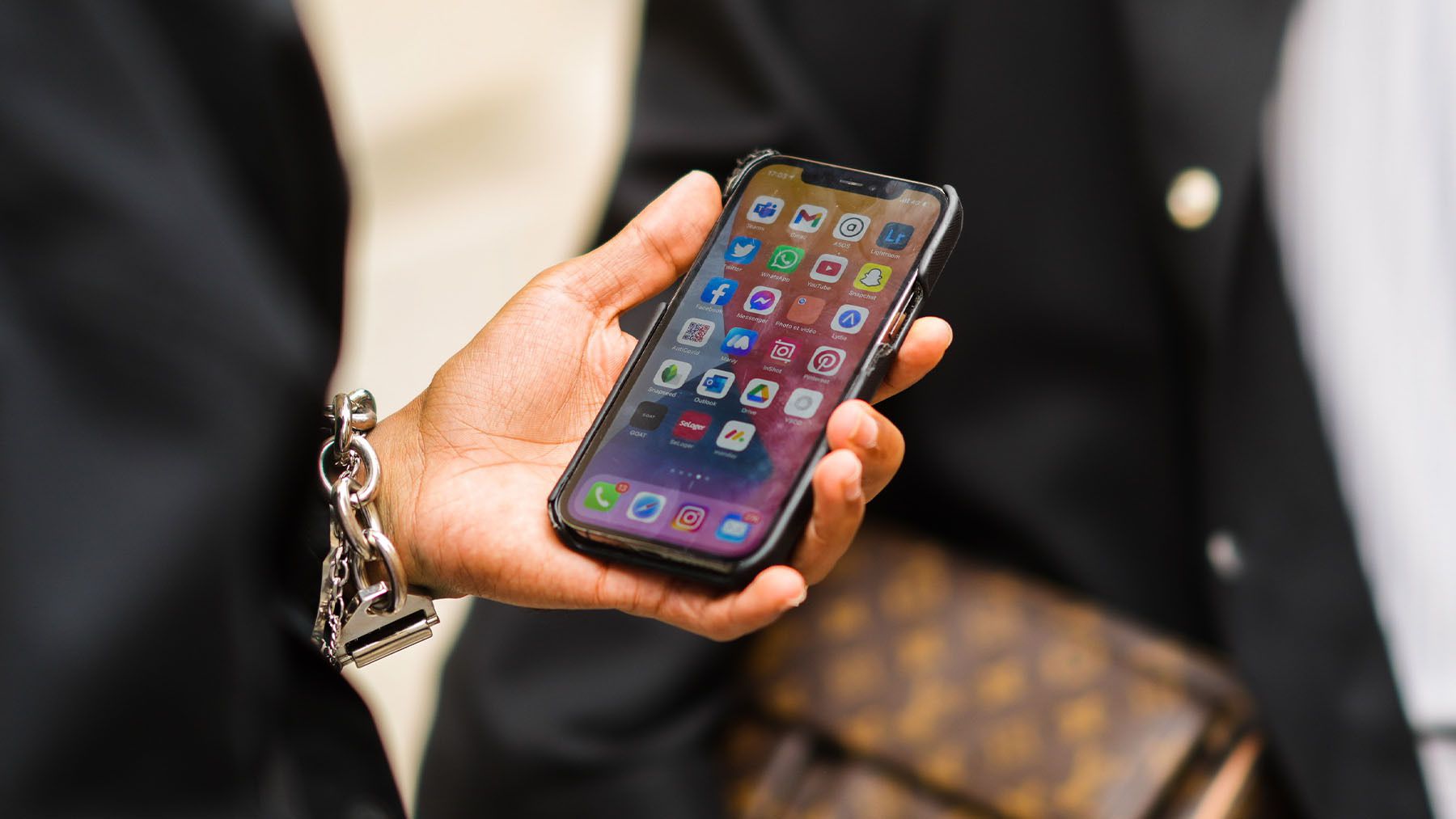

Last year was challenging for Farfetch, but there was at least one bright spot for the company.
Farfetch’s app was its “most profitable and fastest-growing channel,” Stephanie Phair, group president, said on the company’s earnings call in February.
Companies such as Nike and Levi’s have also pointed to their apps as key drivers of digital sales. For fashion retailers, an app that gives them real estate on a consumer’s phone screen and a direct line of communication through push notifications is enticing. Consumers can check their devices more than 50 times a day. More and more often, they’re doing so to shop. The share of US retail sales happening via mobile is forecast to reach 8.7 percent in 2026, according to Insider Intelligence, up from just 4.1 percent in 2019.
So should every brand have an app?
“Oh gosh no,” said Sucharita Kodali, vice president and principal analyst focused on digital strategy at Forrester, a research and advisory firm. “For the most part, it’s not that necessary.”
For every Farfetch, Nike and Levi’s, there are countless brands with apps nobody uses. Consumers are selective about which ones to give space on their screen, and some brands have discovered a mobile-optimised e-commerce site accomplishes the same goals for far less expense. Patagonia notably shut down its app in 2016, saying its newly phone-friendly site would handle its mobile commerce.
Building an app can also require considerable money and effort.
“We found out quickly that application development comes with an entirely different set of demands than an e-commerce site,” Kate Ridley, chief brand and product officer at Allbirds, wrote in an email. They needed developers with Apple iOS experience, designers who knew mobile design, product managers who understood the intricacies of iOS and marketers who knew how to grow an app’s user base.
But when an app works, it can pay off. A 2019 study found customers who downloaded and used a retailer’s app tended to buy more frequently, purchase more items and spend greater amounts than non-app customers. (They also returned more items, but the researchers concluded there was still a net increase in value.)
“We often find that customers on our app have a higher repeat purchase rate and are some of our highest lifetime value customers of any of our channels,” Ridley said.
Downloads of e-commerce retail apps also grew 11 percent globally in 2022 compared to the previous year, according to Data.ai, a mobile analytics firm.
Apps are clearly worthwhile for some at least. Here are points to keep in mind when considering whether to launch one.
Which Fashion-Retail Apps Are Shoppers Using Most?
While brands with larger customer bases generally have more app users, the fast-fashion and athletic segments saw some of the highest numbers of monthly users in 2022, according to a Data.ai review of apps selected by BoF.
In addition to there being strong demand for their products, these categories lend themselves to app features that can draw users back. Activewear apps might offer fitness information; in Lululemon’s app, logged-in members get access to free classes, for example.
Fast-fashion brands, meanwhile, regularly release new products or lookbooks to browse and can employ the same addictive tricks as gaming and social apps. Shein — the clear winner in usage — is designed to feel more like a social app than pure retail, according to Lexi Sydow, head of insights at Data.ai, which estimates Android users alone collectively spent nearly 35 million hours in the app in 2022.
“You’re ‘hearting’ items versus adding to cart,” Sydow said. “There are all of these gamified exclusive discounts and they’re encouraging you to sign up for push notifications or SMS text messaging.”
Shein also has a comprehensive strategy to get users to download its app. It runs paid ads in the app store and frequently updates all the imagery on its page to promote sales pegged to special events like Black Friday or the Super Bowl.
While apps from luxury brands tend to offer innovative features, their low user numbers make sense “given the pool of folks in that bracket to purchase might be a bit smaller anyways,” Sydow said. They’re also not the sorts shoppers visit daily to see new items. Several luxury apps, including Saint Laurent’s and Valentino’s, didn’t have large enough user bases for Data.ai to provide usage metrics that met its standard of confidence.
When Does It Make Sense to Launch an App?
The larger a company, the larger the potential audience for an app, but other factors also influence downloads.
“We see two big drivers,” said Ben Nassler, vice president of consumer apps at NewStore, a platform for commerce services that has made apps for brands including Golden Goose, G-Star Raw and Scotch & Soda. “A brand that is really strong with a strong following, those customers are very likely to also demand an app. And then if a brand has some share of repeat purchasers, that’s the other part of it.”
Consumers are also more likely to use apps that offer additional capabilities beyond what a website provides. Users of Nike’s app can scan products in-store for more information or to save them to a wishlist. H&M’s app provides a similar in-store function to find colours and sizes available and a visual search where users take a picture or use one from their phone to find similar H&M products. Golden Goose made its app a key piece of its loyalty programme, Nasser said, sharing exclusive offers and first looks at new items.
Which Features Should an App Have?
Launching with every feature possible isn’t necessarily the best option, however, especially for young brands.
“If you’re a start-up … less is best,” said Ranji Persad, vice president of North American sales at Net Solutions, a custom software developer with large and small clients.
First, brands should be clear about what problems they’re trying to solve, what features they absolutely need and what demographics they’re aiming at, he said. Then they should get their app out quickly, ideally within five months. A common mistake is adding more and more features that extend the timeline.
But Nasser also warned about doing too little. He’s seen apps flop when brands release the minimum viable product. In his view, options like product recommendations and attractive lookbooks are table stakes. Brands can add features like in-store options or virtual try-on later.
Ultimately, the priority should be nailing the commerce functionalities. Sydow said apps should inherently streamline the user interface and customer experience, “which helps to speed up and encourage that transaction process.”
How Much Does It Cost to Build an App — and Maintain It?
The experts BoF spoke to said the cost of an app can range from tens of thousands of dollars to more than $1 million.
Fashion companies often need to hire outside agencies to do the technical work. If a brand uses a software-as-a-service application with tools to create a storefront and there’s minimal custom work involved, the price for a barebones app could be $20,000 or even less, according to Persad.
But what makes apps expensive is their features: the greater the number and the more complexity, the more development is required and the higher the price. Loyalty options and product recommendation are expensive. There are additional costs to consider, too, such as the content management system and backend infrastructure needed for sending push notifications and updating content regularly.
Nasser, who worked on the relaunch of Hugo Boss’s app several years ago when he was at the brand, said if a company is building everything from scratch, a minimal investment for an iOS app would be $300,000 to $400,000. An Android app would be an additional amount. (NewStore markets itself as a way to help mitigate these costs with its platform.)
The expenses don’t end when the app launches. Developers are constantly fixing bugs and making updates. When the iPhone 10 introduced a full-screen display, for example, it meant each screen in an iOS app had to be redesigned, Nasser said.
When an app connects with shoppers, though, the rewards are worthwhile. Since G-Star Raw released its app in 2018, it has used it to offer loyalty benefits like early access to sales. Customers with the app use it about three times as much as its desktop or mobile site, according to NewStore, and as of 2022, it accounted for nearly a third of the brand’s total e-commerce revenue.



